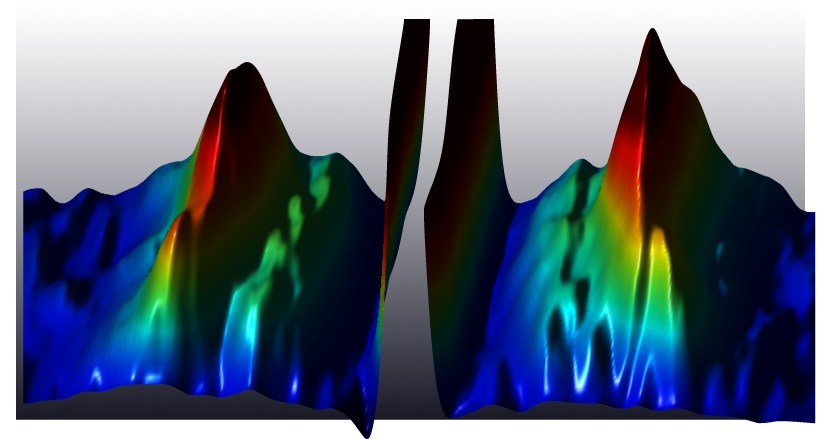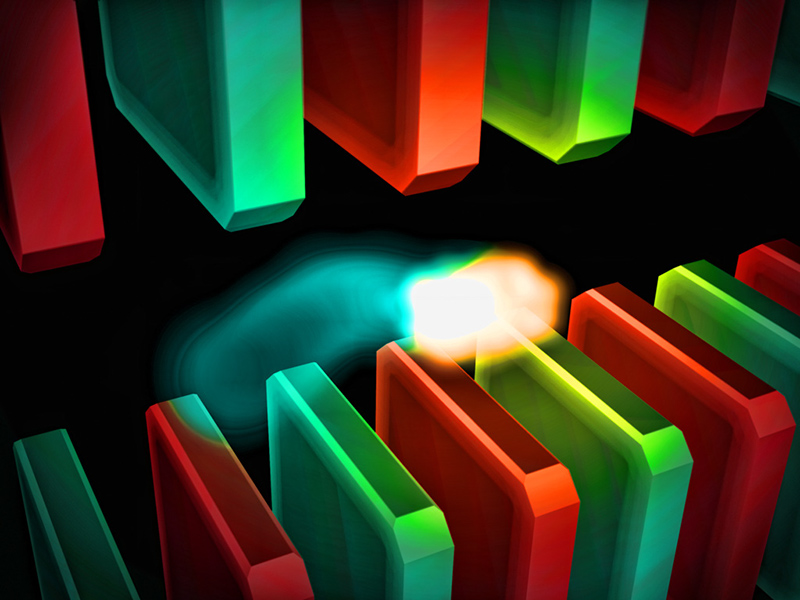Next-Generation Lightsource
Next Generations of X-ray Lightsource
We are developing what might be termed the next generation lightsource: a brilliant, compact X-ray source with the potential for widespread application in university-scale laboratories. 
A novel scheme based on high-intensity lasers allows to reduce the spatial dimensions of the source from the kilometer-scale of a conventional facility to a table-top system. Moreover, this laser-driven source is anticipated to exhibit unique properties: its pulse duration is expected to be more than four orders of magnitude shorter than those of current (3rd-generation) synchrotrons and in combination with Angstrom wavelengths will allow four-dimensional imaging experiments with atomic resolution (more). The high-power laser is used in a so-called laser-wakefield accelerator to accelerate electrons with unique properties. Sources driven by such an accelerator will push the frontier of ultrafast measurements: their ultrashort pulses together with the inherently perfectly synchronized driver laser allows them to probe dynamics with temporal resolutions that cannot be reached even by state of the art X-ray FELs. The reduction in size and cost holds the promise for a wide proliferation on the university level with applications in research fields ranging from materials science, chemistry, physics to the life sciences and medicine. In the long term, these developments may culminate in a compact ultra-brilliant X-ray free-electron laser (XFEL) with revolutionary impacts on many scientific fields (more)

The figure shows the emission of undulator radiation from an electron bunch oscillating in a sinusoidal magnetic field. Figure: Greg Stewart, SLAC.
An undulator source consist of an electron accelerator and an undulator, which is a periodic magnetic structure. Electrons are first accelerated to relativistic energies and then during their passage of the undulator forced to transversely oscillate and emit radiation. The wavelength of the emitted radiation depends on the energy of the electrons and is in the X-ray range for relativistic electron energies. Our next-generation source is based on a novel electron acceleration scheme that uses a high-power laser as driver: a so-called laser-wakefield accelerator (LWFA) (more). We are working in close collaboration with the UNL's Extreme Light Laboratory and its PetaWatt (PW) Diocles laser facility. Due to the significantly higher accelerating field gradient of LWFA, this approach allows a more than three orders of magnitude reduction in size compared to conventional sources. Moreover, our laser-driven source exhibits unique properties as the duration of its pulses is expected to be intrinsically only 5 femtoseconds (10-15 s). The additional perfect temporal synchronization to the driver laser makes it a perfect tool to probe atomic dynamics (more) with temporal resolutions that cannot be reached even by state of the art X-ray FELs.

The figure shows a schematic of a laser-driven undulator setup. A high-power laser beam (red) is focused into a gas target, where it accelerates an ultrashort electron beam (yellow). The electrons subsequenlty travese a periodic magnetic structure (undulator) and emit X-ray radiation (blue). The radiation and electron beam parameters can be simultaneously observed using specific diagnostics.
Previous Developments
(by our group or members of our group)
- demonstration of a stable laser-wakefield electron accelerator
- the development construction and test (at a conventional accelerator) of a short-period undulator
- demonstration of a remarkably stable LWFA-driven undulator source in the soft X-ray wavelenght range
Future Developments and Challenges
- decrease of the generated wavelength into the water-window and eventually into the hard X-ray range
- increase in the number of emitted photons by
- increasing the accelerated charge
- improving the undulator design (development of a cryogenic-cooled undulators)
- further improvement of the source shot-to-shot stability and reproducibility
- first science with LWFA-driven sources
- developments towards a laser-wakefield driven free-electron laser
Relevant Publications:
- Laser-driven soft-X-ray undulator source
Nature Physics 5, 826-829 (2009) - Miniature magnetic devices for laser-based, table-top free-electron lasers
Phys. Rev. ST Accel. Beams 10, 082401 (2007) - Design considerations for table-top, laser-based VUV and X-ray free electron lasers
Applied Physics B 86, 431-435 (2007) - Generation of stable, low-divergence electron beams by laser-wakefield acceleration in a steady-state-flow gas cell
Phys. Rev. Lett. 101, 085002 (2008) - GeV-scale electron acceleration in a gas-filled capillary discharge waveguide
New Journal of Physics 9, 415 (2007)